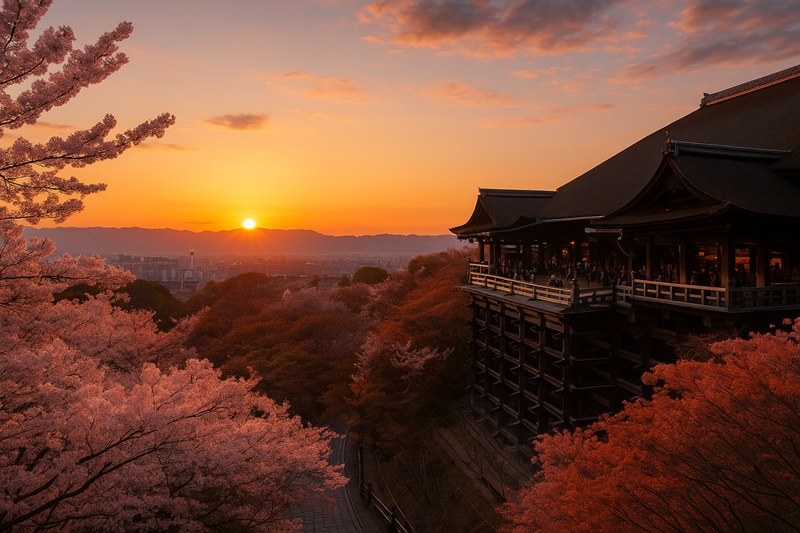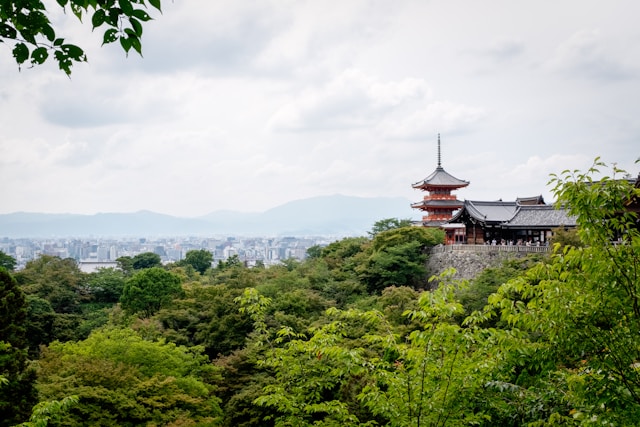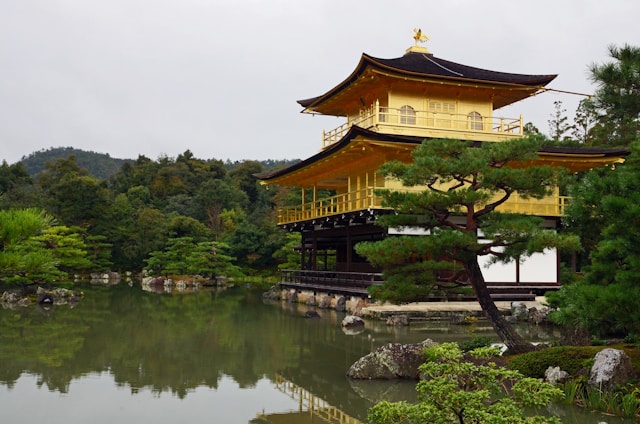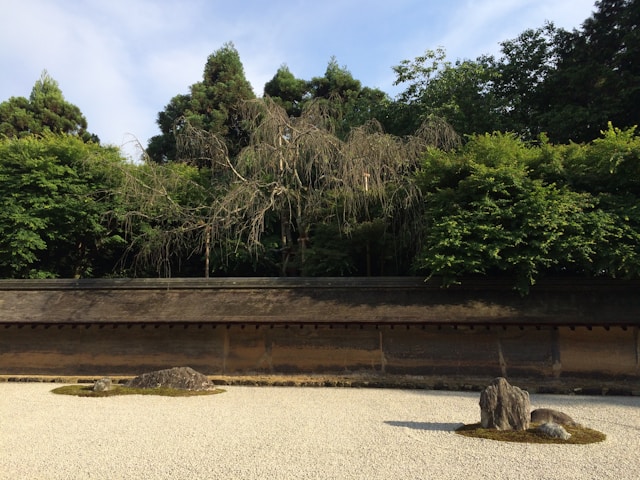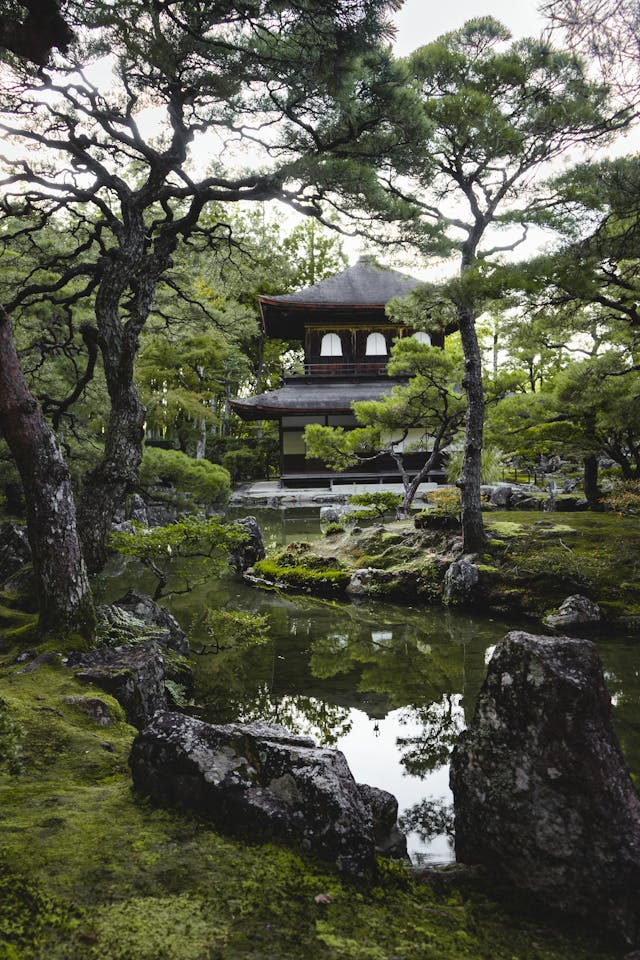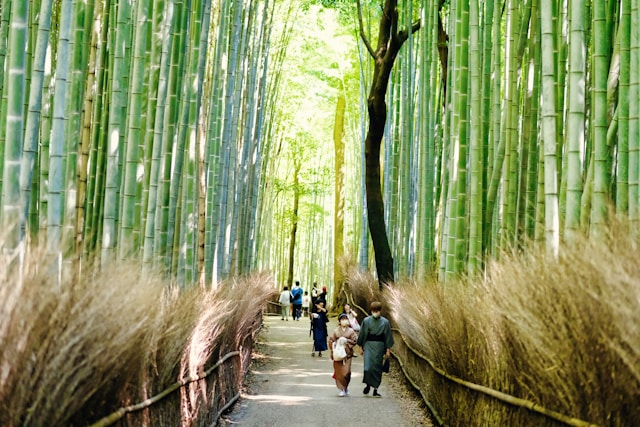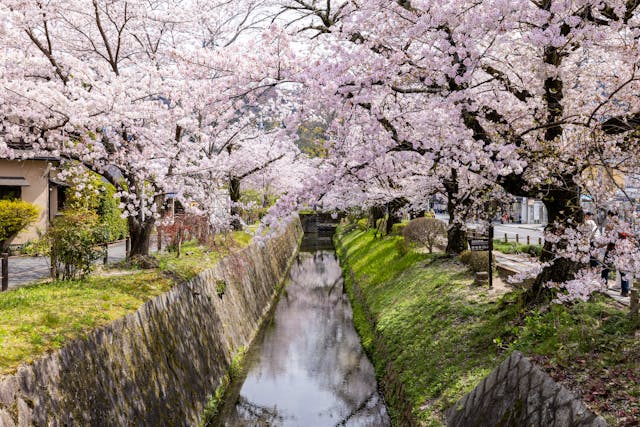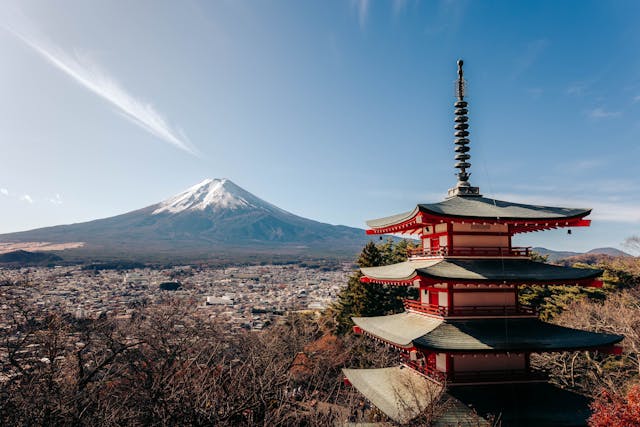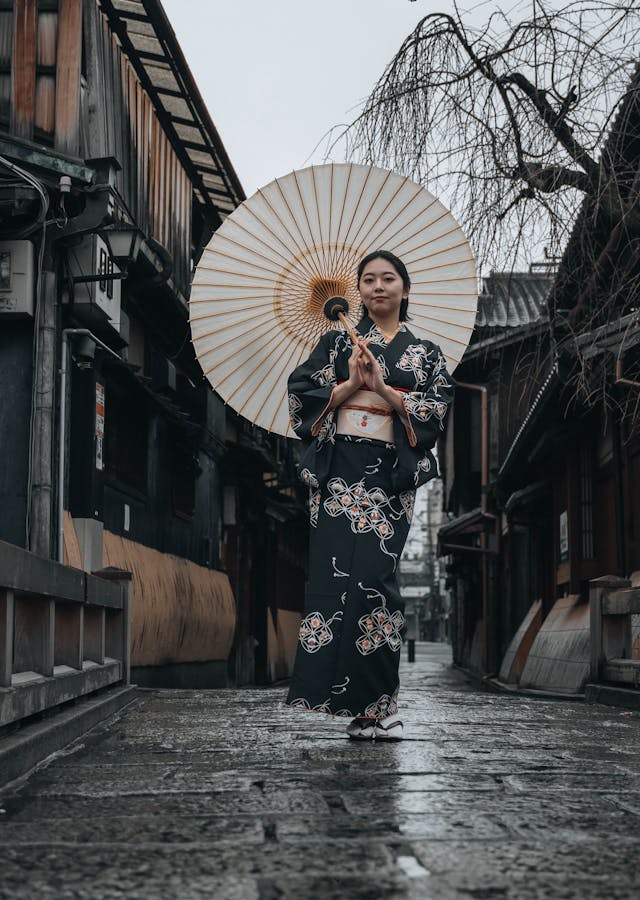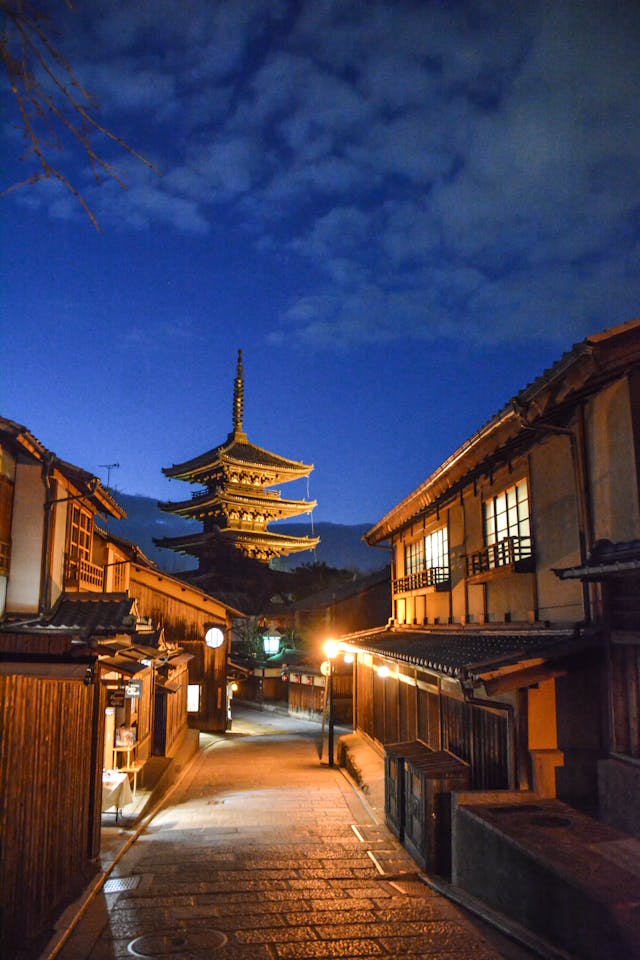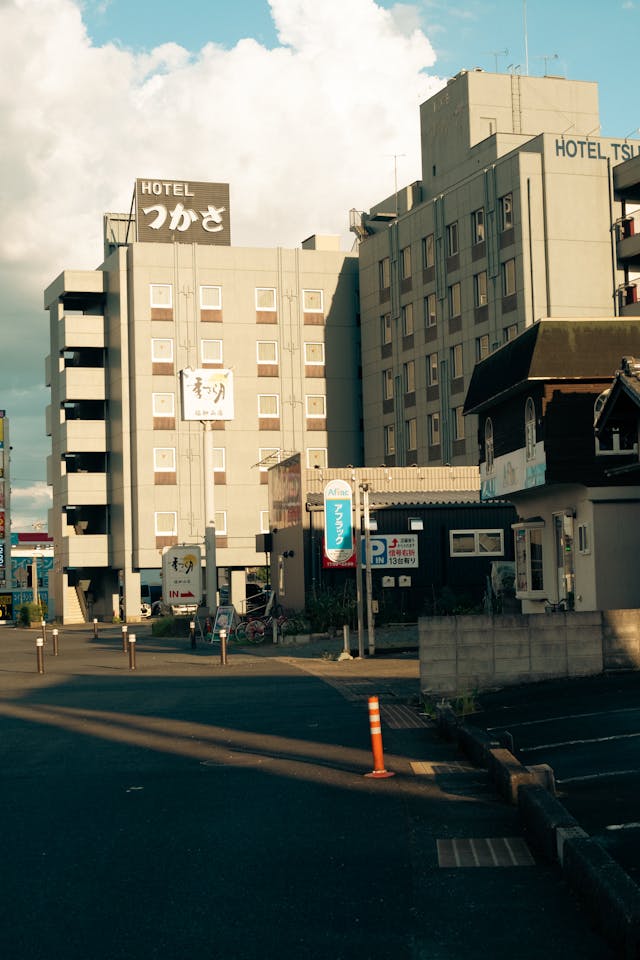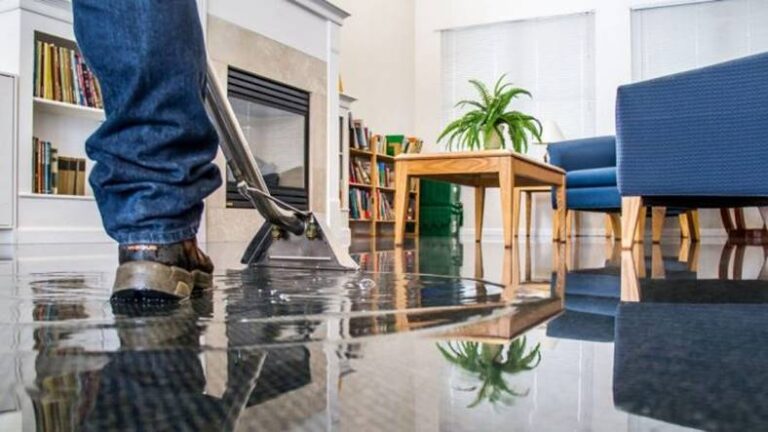Why Kyoto Should Be on Your Bucket List
If you’ve ever dreamed of stepping into a city where ancient temples meet bustling markets and cherry blossoms frame centuries-old streets, Kyoto should be at the very top of your list. Known as Japan’s cultural capital, it blends timeless tradition with modern comfort — making it perfect for first-time visitors and seasoned travelers alike.
But here’s the challenge: Kyoto has over 1,600 temples, hundreds of gardens, and countless cultural experiences. Deciding what to do in Kyoto can be overwhelming.
This guide narrows it down to 25 must-see spots and hidden gems, plus practical travel tips, Kyoto itineraries, etiquette advice, and seasonal highlights — so you can explore confidently without wasting precious time.
Quick Answer: Top 5 Unmissable Kyoto Experiences
Short on time? Here are the five experiences every traveler should prioritize:
- Fushimi Inari Taisha – Walk through thousands of red torii gates.
- Kiyomizu-dera Temple – Famous wooden stage with panoramic city views.
- Arashiyama Bamboo Grove – Breathtaking natural wonder.
- Gion District – Spot geisha and explore traditional teahouses.
- Nishiki Market – Kyoto’s foodie paradise.
These can all be visited in two full days with smart route planning.
Best Temples & Shrines in Kyoto
Kyoto’s spiritual landmarks are more than tourist attractions — they are living centers of Japanese history and culture.
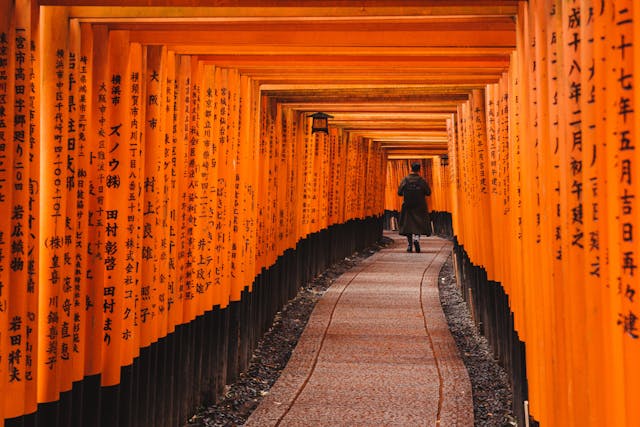
1. Fushimi Inari Taisha (Iconic Red Torii Gates)
Why Go: The most photographed shrine in Japan, Fushimi Inari is famous for its thousands of vermilion torii gates winding up Mount Inari. Dedicated to Inari, the Shinto god of rice and prosperity, it’s been a place of worship since the 8th century. Fox statues, believed to be divine messengers, are scattered throughout the complex.
Best Time to Visit: Early morning (before 8 a.m.) or after sunset to avoid heavy tourist crowds.
Travel Tip: The full hike to the summit takes 2–3 hours round trip. Wear good walking shoes; small tea houses along the way offer rest stops.
Seasonal Highlight:
- Spring: Cherry blossoms near the entrance.
- Autumn: Maple leaves brighten the trails.
Nearby: Tofuku-ji Temple (10-min walk) with stunning Zen gardens.
Practical Info:
- Hours: Open 24/7
- Fee: Free
- Access: JR Inari Station (2 min walk) or Fushimi Inari Station (Keihan Line)
2. Kiyomizu-dera (UNESCO World Heritage Site)
Why Go: Founded in 778, Kiyomizu-dera’s iconic wooden stage—built without nails—offers panoramic city views. Its name means “Pure Water Temple,” referencing the Otowa Waterfall, where visitors drink for health, longevity, or academic success.
Best Time to Visit: Late afternoon for golden-hour lighting and thinner crowds.
Insider Tip: Visit the Jishu Shrine for matchmaking blessings.
Seasonal Highlight:
- Spring: Pink cherry blossoms frame the temple.
- Autumn: Vibrant maple leaves surround the stage.
Nearby: Sannenzaka & Ninenzaka—historic shopping alleys for souvenirs and local sweets.
Practical Info:
- Hours: 6:00 a.m. – 6:00 p.m. (seasonal night illuminations)
- Fee: ¥400 (~$3 USD)
- Access: Bus #100 or #206 from Kyoto Station to Gojo-zaka or Kiyomizu-michi; 10-min walk.
3. Kinkaku-ji (Golden Pavilion)
Why Go: Built in 1397 as a shogun’s villa, now a Zen temple with the top two floors covered in gold leaf, reflecting in a scenic pond.
Best Time to Visit: Morning for calm reflections; winter for snow scenes.
Photography Tip: Shoot from the island viewpoint for postcard-worthy images.
Seasonal Highlight:
- Winter: Golden pavilion under snow.
- Autumn: Fiery red leaves create stunning contrast.
Nearby: Ryoan-ji Temple’s famous Zen rock garden.
Practical Info:
- Hours: 9:00 a.m. – 5:00 p.m.
- Fee: ¥500 (~$3.50 USD)
- Access: Bus #101 or #205 from Kyoto Station to Kinkaku-ji Michi.
4. Ryoan-ji (Zen Rock Garden)
Why Go: Known for its minimalist rock garden of 15 stones, arranged so only 14 are visible from any angle—symbolizing imperfection.
Best Time to Visit: Morning for serenity before tour buses arrive.
Nearby: Kinkaku-ji (20-min walk).
Practical Info:
- Hours: 8:00 a.m. – 5:00 p.m. (Mar–Nov); closes at 4:30 p.m. in winter.
- Fee: ¥500 (~$3.50 USD)
- Access: Bus #50 or #55 from Kyoto Station.
Hidden Gems in Kyoto
If you want to escape the crowds, these temples offer tranquility and unique charm.
5. Gio-ji Moss Temple
Why Go: A small temple surrounded by a moss-covered garden that glows vibrant green, especially after rain.
Seasonal Highlight: Best in rainy season (June–July).
Practical Info:
- Hours: 9:00 a.m. – 5:00 p.m.
- Fee: ¥300 (~$2 USD)
- Access: Short walk from Arashiyama area.
6. Honen-in Temple
Why Go: Famous for seasonal sand art at its entrance and serene, uncrowded gardens.
Practical Info:
- Hours: 6:00 a.m. – 4:00 p.m.
- Fee: Free
- Access: 10-min walk from Philosopher’s Path.
7. Kennin-ji (Oldest Zen Temple in Kyoto)
Why Go: Founded in 1202, home to the striking Twin Dragons ceiling painting.
Practical Info:
- Hours: 10:00 a.m. – 5:00 p.m.
- Fee: ¥500 (~$3.50 USD)
- Access: Near Gion District, 10-min walk from Gion-Shijo Station.
Nature & Scenic Spots
Kyoto isn’t all temples — its natural landscapes are equally magical.
8. Arashiyama Bamboo Grove
Why Go: Towering green bamboo stalks create a peaceful, surreal atmosphere.
Best Time to Visit: Early morning before 8:30 a.m.
Nearby: Monkey Park Iwatayama for city views.
Practical Info:
- Fee: Free
- Access: JR Saga-Arashiyama Station or Arashiyama Station (Keifuku Line).
9. Philosopher’s Path
Why Go: A scenic 2-km canal-side walk lined with cherry trees, named after philosopher Nishida Kitaro.
Best Time: Early April for sakura bloom.
Practical Info:
- Fee: Free
- Access: Between Ginkaku-ji and Nanzen-ji temples.
10. Mount Kurama & Kibune Village
Why Go: Mountain hikes, temples, riverside dining, and onsen.
Practical Info:
- Access: Eizan Railway to Kurama Station; hike to Kibune (2–3 hours).
Kyoto Food & Drink Experiences
Japan is a paradise for food lovers, and Kyoto has its own specialties.
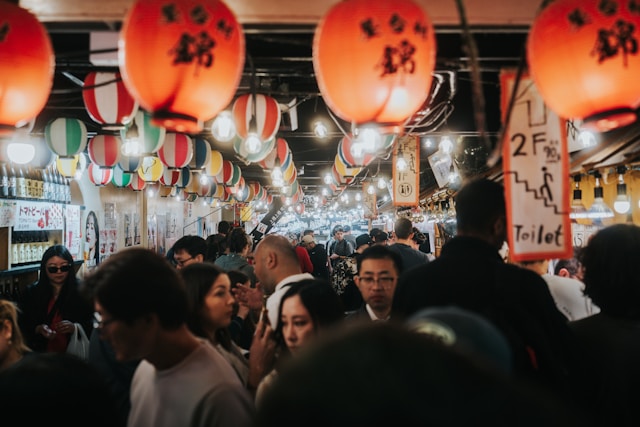
11. Nishiki Market (Kyoto’s Kitchen)
Why Go: Narrow arcade with 130+ food stalls—matcha sweets, pickles, street snacks.
Tip: Go hungry; many free tastings.
Practical Info:
- Hours: 9:00 a.m. – 6:00 p.m.
- Access: Karasuma or Shijo Station.
12. Matcha in Uji (Day Trip)
Why Go: The heart of Japan’s matcha production—tea houses, soba, ice cream.
Access: JR Nara Line from Kyoto Station to Uji (20 min).
13. Kaiseki Dining
Why Go: Multi-course haute cuisine reflecting Kyoto’s seasonal produce.
Cost: ¥8,000–¥20,000 per person.
Cultural Kyoto Experiences
14. Gion District Geisha Spotting
Why Go: Kyoto’s most famous entertainment district, Gion, is where you can still glimpse geiko (Kyoto dialect for geisha) and maiko (apprentices) walking to evening appointments in traditional wooden teahouses. The area dates back to the Edo period and is a living example of Kyoto’s preserved heritage.
Best Time to Visit: Early evening (5:30–6:30 p.m.), when geiko and maiko often move between teahouses for performances.
Insider Tip: Avoid blocking their path for photos—admire from a respectful distance. For a guaranteed cultural encounter, book a geisha performance and dinner experience through a licensed teahouse.
Seasonal Highlight:
- Summer: Gion Matsuri Festival — Kyoto’s biggest, with floats, street food, and parades.
Nearby: Hanami-koji Street for traditional architecture and Yasaka Shrine at the eastern end.
Practical Info:
- Hours: Streets open 24/7; performances require reservations.
- Fee: Free to explore; performances start from ¥6,000 (~$40 USD).
- Access: Gion-Shijo Station (Keihan Line) or Kawaramachi Station (Hankyu Line).
15. Kimono Rental & Photoshoot
Why Go: Wearing a kimono in Kyoto is not just about fashion—it’s a way to connect with Japanese culture. Rental shops offer full dressing services, hair styling, and accessories, making it easy for visitors to explore temples and streets in authentic attire.
Best Time to Visit: Morning, so you can enjoy the whole day in costume and take advantage of softer light for photos.
Insider Tip: Choose lighter fabrics in summer (yukata) and opt for layers in winter. Many rental shops near Gion and Kiyomizu-dera allow same-day returns, while some offer next-day returns for overnight use.
Seasonal Highlight:
- Spring & Autumn: Most photogenic with cherry blossoms or red maple leaves.
Nearby: Sannenzaka & Ninenzaka streets—perfect for kimono photo walks.
Practical Info:
- Cost: ¥3,000–¥6,000 per day; premium silk kimonos from ¥8,000+.
- Rental Duration: 4–8 hours standard; next-day options available.
- Access: Shops located near Gion-Shijo Station, Kawaramachi Station, and Kiyomizu area.
16. Tea Ceremony with a Tea Master
Why Go: A traditional Japanese tea ceremony (chanoyu) is more than drinking matcha—it’s a ritual that embodies harmony, respect, purity, and tranquility. Kyoto, being the cultural capital, offers authentic settings in tea houses, temples, and gardens.
Best Time to Visit: Afternoons are ideal, often paired with sweets and temple visits.
Insider Tip: Book small-group sessions or private experiences for a more intimate, guided introduction. Many hosts will explain tea history, etiquette, and the meaning behind every gesture.
Seasonal Highlight:
- Winter: Enjoy matcha in warm, cozy tea rooms.
- Spring: Some tea ceremonies are held outdoors under blooming cherry trees.
Nearby: Urasenke and Omotesenke schools, the two main tea ceremony traditions, both have facilities in Kyoto.
Practical Info:
- Cost: ¥2,000–¥5,000 per session (30–60 minutes).
- Languages: Many offer English guidance.
- Access: Common locations in Gion, Higashiyama, and near Kyoto Station.
Seasonal Kyoto: Month-by-Month Guide
| Month | Highlight | Weather Avg (°C) |
| Mar–Apr | Cherry blossoms at Maruyama Park, Heian Shrine | 10–15°C |
| May–Jun | Fresh greenery, tea harvest in Uji | 15–22°C |
| Jul–Aug | Gion Matsuri, river dining in Kibune | 25–32°C |
| Sep–Nov | Autumn leaves at Eikando, Tofuku-ji | 15–20°C |
| Dec–Feb | Snowy Kinkaku-ji, Kurama Onsen | 3–10°C |
What to Do in Kyoto at Night
17. Pontocho Alley Dining
Why Go: Pontocho is a narrow, lantern-lit alley running parallel to the Kamogawa River. Known for its intimate restaurants, traditional tea houses, and seasonal riverside dining decks (kawayuka), it’s one of Kyoto’s most romantic evening spots. Some venues have been operating for centuries.
Best Time to Visit: Evenings from 6:00 p.m. onwards, when the lanterns glow and the alley comes alive.
Insider Tip: Reserve a river-facing table between May and September for the kawayuka dining experience. Many restaurants here serve Kyoto kaiseki, grilled river fish, and local sake.
Seasonal Highlight:
- Summer: Outdoor dining over the Kamogawa River.
- Winter: Cozy indoor dining with hot nabe (hot pot) dishes.
Nearby: Gion District is a 10-minute walk away—combine for a night of culture and cuisine.
Practical Info:
- Hours: Most restaurants open 5:00 p.m.–11:00 p.m.
- Fee: Free to walk; meals range from ¥3,000 to ¥15,000.
- Access: Gion-Shijo Station or Kawaramachi Station.
18. Yasaka Pagoda Night Photography
Why Go: Officially known as Hokan-ji Temple, Yasaka Pagoda is one of Kyoto’s most photographed landmarks, especially at night. The softly illuminated five-story pagoda stands at the end of a charming, stone-paved street lined with traditional houses.
Best Time to Visit: After dark, ideally on weekdays for fewer crowds.
Insider Tip: Bring a tripod for long-exposure shots, but be mindful of foot traffic. The streets are especially photogenic after rain when the pavement reflects the lantern light.
Seasonal Highlight:
- Spring & Autumn: Lantern festivals and seasonal night illuminations.
Nearby: Kiyomizu-dera is a short uphill walk and offers seasonal night openings.
Practical Info:
- Hours: Street accessible 24/7. Pagoda interior rarely open to the public.
- Fee: Free to photograph.
- Access: 10-minute walk from Kiyomizu-Gojo Station.
19. Kyoto Tower Observation Deck
Why Go: Standing 131 meters tall, Kyoto Tower offers the best panoramic night views of the city. You’ll see Kyoto’s grid layout, illuminated temples, and even the faint outline of Osaka on clear nights.
Best Time to Visit: After 7:00 p.m. when city lights are at their brightest.
Insider Tip: Visit just before sunset to see the city transition from day to night.
Seasonal Highlight:
- Winter: Crisp, clear skies offer the best visibility.
Nearby: Kyoto Station’s rooftop garden and shopping arcades for late-night snacks.
Practical Info:
- Hours: 10:30 a.m. – 9:00 p.m. (last entry 8:40 p.m.)
- Fee: ¥800 (~$5.50 USD)
- Access: Directly across from Kyoto Station.
What to Do Near Kyoto: Best Day Trips
20. Nara – Temples & Tame Deer
Why Go: Once Japan’s capital, Nara is famous for its friendly, free-roaming deer and UNESCO-listed temples. Todai-ji houses the world’s largest bronze Buddha, and Kasuga Taisha Shrine is renowned for its hundreds of stone lanterns.
Best Time to Visit: Morning, to enjoy deer feeding before crowds peak.
Insider Tip: Buy “shika senbei” (deer crackers) for feeding—hold them high to avoid being surrounded.
Seasonal Highlight:
- February: Lantern festivals at Kasuga Taisha.
Practical Info:
- Travel Time: ~45 min from Kyoto by JR Nara Line.
- Cost: ~¥720 one way.
21. Uji – Matcha Capital of Japan
Why Go: A serene riverside city south of Kyoto, Uji is the birthplace of Japan’s finest matcha. Beyond tea, it’s home to the Byodo-in Temple, featured on the 10 yen coin.
Best Time to Visit: Late morning—start with tea tastings, then temple visits.
Insider Tip: Join a matcha-making workshop to grind your own green tea powder.
Seasonal Highlight:
- May–June: Tea harvest season with fresh matcha products.
Practical Info:
- Travel Time: ~20 min by JR Nara Line.
- Cost: ~¥240 one way.
22. Osaka – Street Food & Nightlife
Why Go: Japan’s kitchen, Osaka, is perfect for a day trip from Kyoto. Dotonbori is packed with neon lights and food stalls serving takoyaki, okonomiyaki, and kushikatsu.
Best Time to Visit: Afternoon into night for the full food-and-lights experience.
Insider Tip: Take the Osaka Aqua Liner river cruise for city views.
Seasonal Highlight:
- Winter: Illuminations in Namba and Umeda.
Practical Info:
- Travel Time: ~30 min by JR Special Rapid Service.
- Cost: ~¥570 one way.
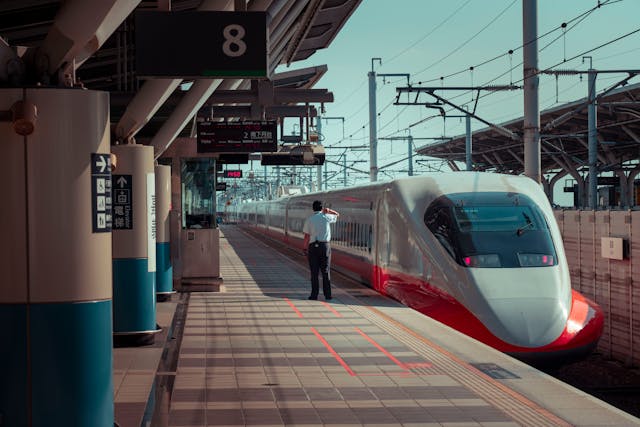
Bullet Train from Tokyo to Kyoto: Times, Costs, and How to Book
One of the fastest and most convenient ways to reach Kyoto—whether you’re a local traveler or visiting Japan for the first time—is by taking the bullet train from Tokyo to Kyoto.
Travel Time & Train Types
Kyoto is served by the Tokaidō Shinkansen line, connecting directly from Tokyo Station or Shinagawa Station.
- Nozomi – Fastest service (~2 hr 10–15 min) with the fewest stops.
- Hikari – Slightly slower (~2 hr 30 min) but fully covered by the Japan Rail Pass.
- Kodama – All-stops service (~3 hr 30–40 min), often cheaper but much slower.
Typical One-Way Fares (Adult, Ordinary Class)
- Nozomi: ~¥13,970 unreserved / ~¥14,170 reserved.
- Hikari/Kodama: ~¥13,320 unreserved / ~¥13,850 reserved.
- Early-Bird Deals: Booking online through JR’s SmartEX can drop prices to ~¥11,820 for the fastest services.
Using the JR Pass
The Japan Rail Pass does not cover Nozomi trains by default, but you can pay a supplemental ticket fee to ride them. Otherwise, opt for the Hikari, which is fully covered and only slightly slower.
How to Book Your Ticket
- Online: Use SmartEX or JR Central’s official reservation site for English-friendly bookings and advance discounts.
- In Japan: Visit any Green Ticket Office (Midori-no-Madoguchi) or use ticket machines at major stations.
- Tip: During peak seasons (cherry blossom, autumn leaves, New Year, Golden Week), reserve 1–2 weeks in advance.
Seat Classes & Views
- Ordinary Class – Comfortable, standard seating.
- Green Car – Roomier seats and quieter cabins.
- Window Tip: Traveling westbound, book a right-side window seat for a clear Mount Fuji view on sunny mornings.
Luggage Rules
For suitcases over 160 cm (total dimensions), you must reserve a seat with an oversized baggage area or pay a small fee onboard. This rule applies to all Shinkansen services.
Door-to-Door Travel Time
From a central Tokyo hotel to your Kyoto accommodation, expect a total 3–3.5 hours including local transfers.
Alternatives to the Bullet Train
While the Shinkansen is the fastest, budget travelers may prefer highway buses or flights.
Highway Buses (Tokyo ↔ Kyoto)
Here are some popular and reliable bus operators:
| Bus Company | Service Type | Approx. Fare (One-Way) | Travel Time | Booking Website |
| Willer Express | Day & overnight buses, standard to premium seating | ¥3,000–¥8,000 | ~7–8 hrs | willerexpress.com |
| JR Bus Kanto / JR Bus West | Day & overnight buses, operated by Japan Rail Group | ¥3,500–¥8,000 | ~7–8 hrs | japanbusonline.com |
| Keio Bus | Overnight buses with multiple boarding points in Tokyo | ¥4,000–¥8,500 | ~7–8 hrs | highway-buses.jp |
| Nishitetsu Bus | Overnight buses with reclining seats | ¥4,500–¥8,500 | ~7–8 hrs | nishitetsu.jp |
| Kintetsu Bus | Day & overnight buses, some with luxury seating | ¥4,500–¥9,000 | ~7–8 hrs | kintetsu-bus.co.jp |
Tips for bus travelers:
- Overnight buses save on hotel costs but consider premium seating for better comfort.
- JR Bus Pass holders may get discounts on certain JR-operated routes.
- Many buses have Wi-Fi, outlets, and restrooms onboard.
- Book early for peak seasons like Golden Week, New Year, sakura, and autumn foliage.
Flights
Kyoto has no airport; fly to Osaka Itami (ITM) or Kansai International (KIX) and transfer:
- Itami → Kyoto: Airport bus (~60 min)
- Kansai → Kyoto: JR Haruka Express (~75–80 min) or airport bus (~90 min)
Where to Stay in Kyoto: Best Areas, Hotels & Costs
Choosing the right area in Kyoto can save travel time and enhance your trip.
Here’s a breakdown of Kyoto’s best neighborhoods, recommended hotels, and average nightly prices.
1. Gion & Higashiyama – For Culture & History Lovers
- Why Stay Here: Traditional streets, temples, and geisha districts right outside your door.
- Best For: First-time visitors, photographers, culture enthusiasts.
- Example Hotels:
- Luxury: The Ritz-Carlton Kyoto – from ¥100,000+ ($680 USD)
- Mid-Range: Kyoto Granbell Hotel – from ¥18,000–¥28,000 ($125–$190 USD)
- Budget: Gion Ryokan Q-beh – from ¥4,000–¥8,000 ($27–$55 USD)
2. Kyoto Station Area – For Convenience & Day Trips
- Why Stay Here: Direct train/bus access, shopping malls, and budget eateries.
- Best For: Travelers planning day trips to Nara, Osaka, Uji.
- Example Hotels:
- Luxury: Hotel Granvia Kyoto – from ¥40,000–¥60,000 ($270–$410 USD)
- Mid-Range: Daiwa Roynet Hotel Kyoto Ekimae – from ¥12,000–¥20,000 ($80–$135 USD)
- Budget: Sakura Terrace The Atelier – from ¥3,500–¥6,000 ($24–$41 USD)
3. Arashiyama – For Nature & Scenic Views
- Why Stay Here: Bamboo groves, river views, and peaceful atmosphere.
- Best For: Couples, slow travelers, nature lovers.
- Example Hotels:
- Luxury: Hoshinoya Kyoto – from ¥80,000–¥120,000 ($545–$820 USD)
- Mid-Range: Arashiyama Benkei – from ¥25,000–¥45,000 ($170–$310 USD)
- Budget: Guesthouse Saga Arashiyama – from ¥5,000–¥9,000 ($34–$62 USD)
4. Downtown Kyoto (Kawaramachi & Pontocho) – For Nightlife & Food
- Why Stay Here: Walking distance to Nishiki Market, Pontocho dining, and shopping.
- Best For: Foodies, shoppers, nightlife seekers.
- Example Hotels:
- Luxury: Cross Hotel Kyoto – from ¥28,000–¥45,000 ($190–$310 USD)
- Mid-Range: Hotel Vista Premio Kyoto Kawaramachi – from ¥14,000–¥22,000 ($95–$150 USD)
- Budget: Piece Hostel Sanjo – from ¥3,500–¥6,500 ($24–$45 USD)
5. Northern Kyoto (Kinkaku-ji Area) – For a Quiet Local Vibe
- Why Stay Here: Away from tourist crowds, near temples and gardens.
- Best For: Repeat visitors, those wanting a calm retreat.
- Example Hotels:
- Luxury: Ryokan Genhouin – from ¥50,000–¥80,000 ($340–$545 USD)
- Mid-Range: Guest House Kyoto Inn – from ¥10,000–¥16,000 ($68–$110 USD)
- Budget: Kyoto Guesthouse Hannari – from ¥3,000–¥5,000 ($20–$34 USD)
Pro Tips:
- Ryokan vs. Hotel: Ryokans offer tatami rooms, futons, and traditional meals (often included in price).
- Peak Seasons: Cherry blossom (early April) & autumn leaves (mid-November) — book 4–6 months ahead.
- Budget Tip: Capsule hotels and hostels in Kyoto Station area offer great value for solo travelers.
Map of All 22 Spots
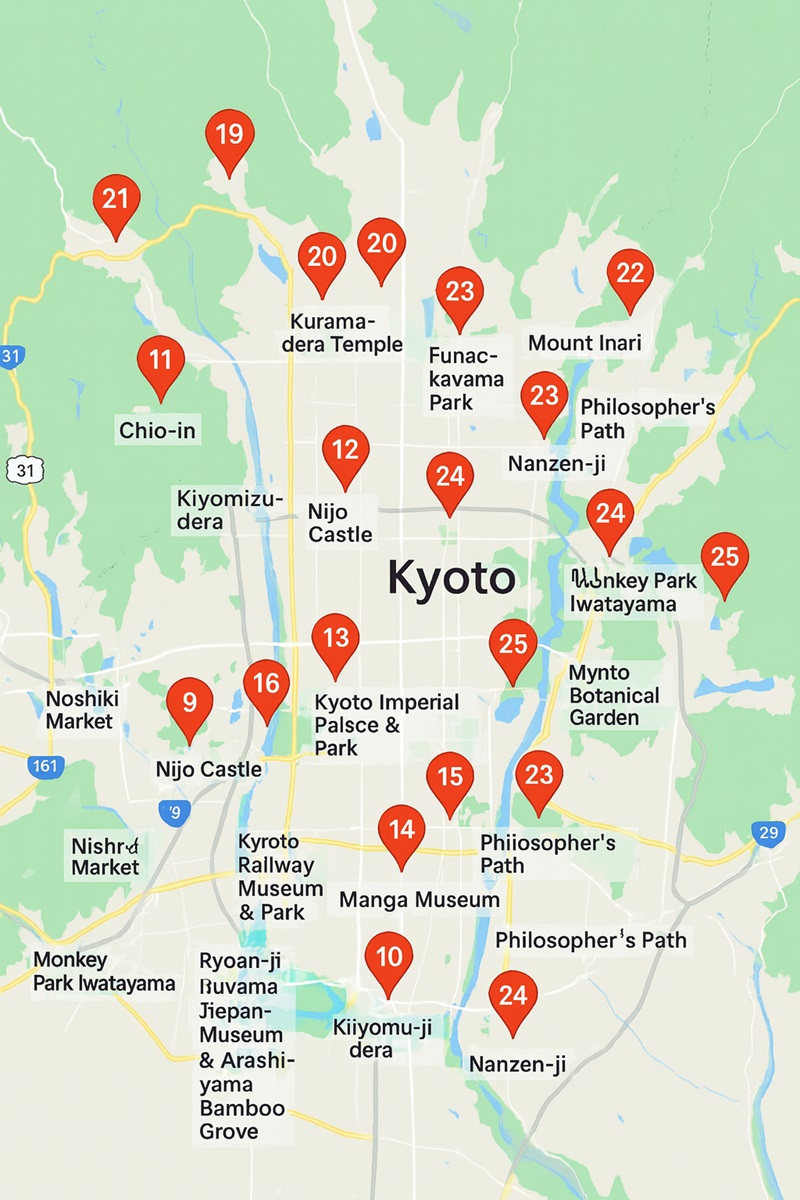
FAQs: Planning Your Kyoto Trip
Q: How Many Days Do You Need to Experience What to Do in Kyoto?
A: Three days is ideal, but you can see the highlights in two days.
Q: What is the best month to visit Kyoto?
A: April (cherry blossoms) and November (autumn leaves) are most popular.
Q: Is Kyoto walkable?
A: Yes, especially in central districts, but buses and trains help cover distances.
Q: What food is Kyoto famous for?
A: Matcha desserts, yuba (tofu skin), kaiseki cuisine, and seasonal sweets.
Conclusion: Your Perfect Kyoto Adventure Awaits
Kyoto is a city where history, nature, and cuisine blend into an unforgettable experience. From the famous temples like Fushimi Inari to hidden moss gardens, from matcha tastings to lantern-lit alleys, there’s something magical in every corner.
Whether you follow this list to the letter or use it as inspiration, you’ll leave Kyoto with lasting memories — and perhaps a deeper appreciation for Japan’s cultural soul.


